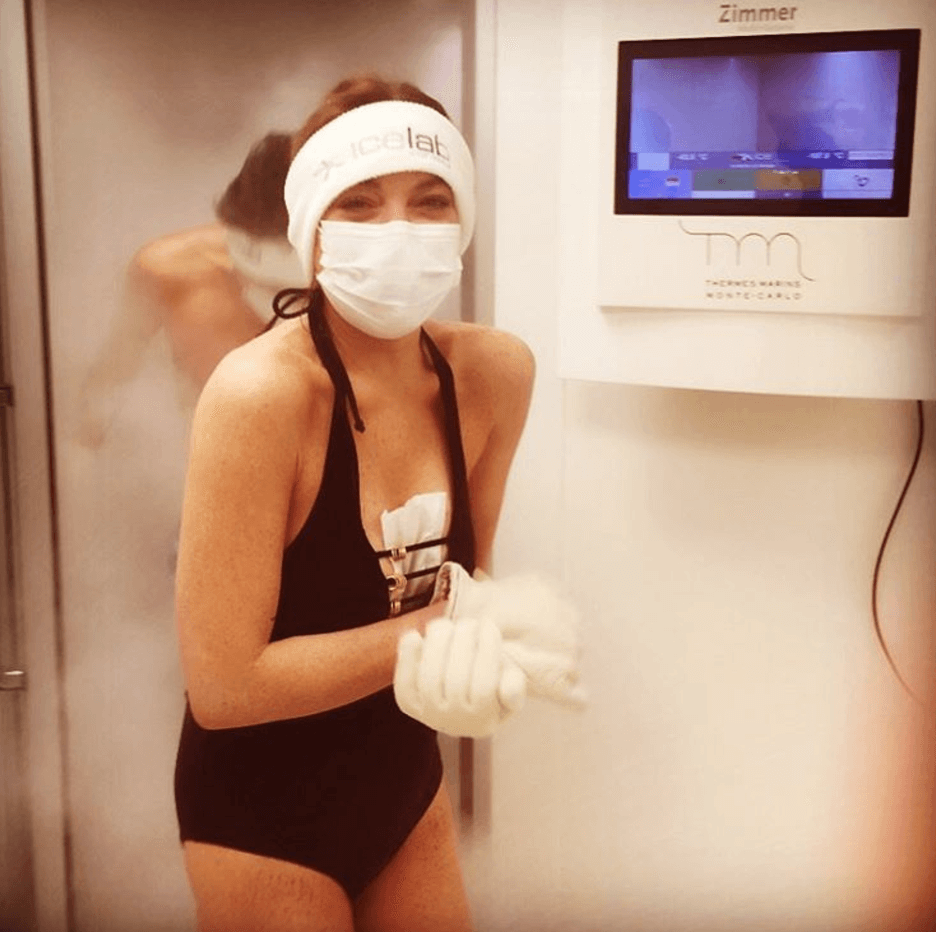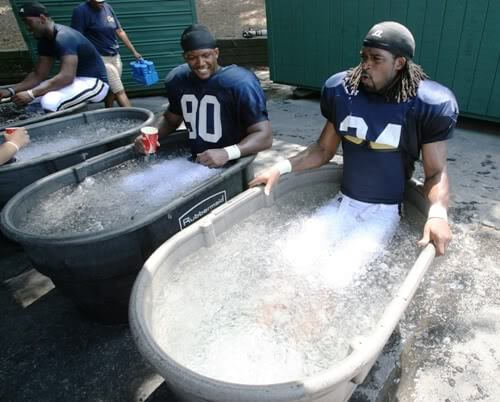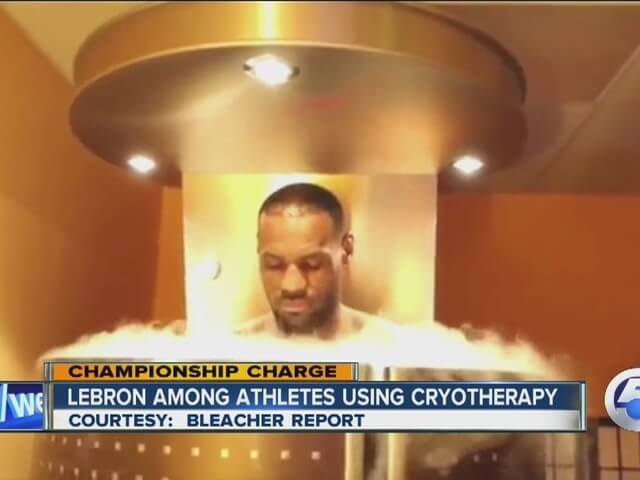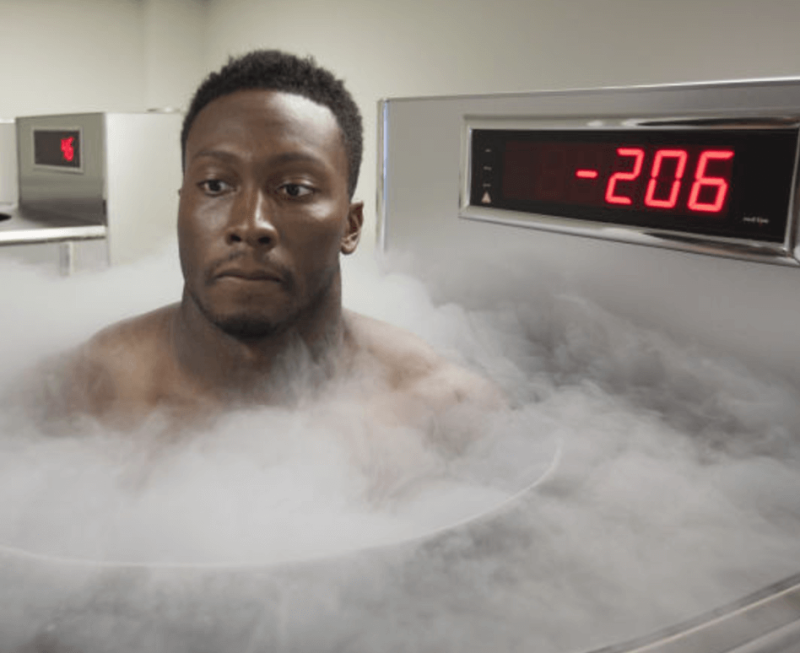Want to lose weight? Improve your sports performance? Jump start your libido? Get rid of fine lines and wrinkles? Dozens of companies are happy to help you, provided you can stand locking yourself in meat freezer cooled to temperatures 200 degrees below zero.
Cryotherapy is the latest alternative medicine celebrity craze to hit the mainstream. Companies offer different packages and set ups. Generally, for between $50 and $100, you can buy one to three minutes of extreme cold exposure. That exposure will decrease fatigue and inflammation, accelerate recover, treat autoimmune disorders and chronic pain, decrease cellulite and accelerate your metabolism according to just one website.

Unfortunately, there is minimal evidence to support any of these claims. Even the FDA has spoken out against the industry and its fatuous claims. “The U.S. Food and Drug Administration advises consumers it lacks the evidence necessary to say cryotherapy effectively treats a range of problems, and to be aware the agency does not back the therapy,” Ken Hedler wrote at the Longview News-Journal.
The liquid-nitrogen based cooling can be done in a ‘cryosauana’ that looks like a tanning bed standing on its end or in a special room or chamber. During the experience, people wear gloves and socks to prevent frostbite, the most common side effect. It’s a much more extreme version of the commonly used ice bath or ice pack to relieve muscle soreness after a workout. Men’s Health’s Corey Levitan described his experience:
I’m in nothing but my underwear and the socks and gloves provided by the clinic. The first minute is cake—it feels like emerging from a swimming pool into winter air. As the air temperature slowly lowers to -241 degrees, however, a stinging sensation develops on my back and the back of my thighs. “That’s completely normal,” says Erin*, the beautiful Millennial who walked me back to my treatment room without checking any vital signs, then stayed in the room and monitored me during the treatment. “It’s nothing to worry about.” The content of Erin’s words are belied by her eyes, which constantly scan mine for full consciousness.
At least one person has died. A staff member at a Las Vegas-based cryotherapy clinic used a cryochamber after hours and was found frozen to death the next morning by her coworkers.
Given the risks, is there really any reason to go freeze yourself? Steven Novella at Science Based Medicine thinks not:
Currently, however, the clinical research for the most plausible applications, muscle recovery from exercise or injury and chronic joint inflammation, is lacking. In both cases there is insufficient evidence to warrant making clinical claims, and less extreme interventions are likely to be just as effective. There is room, however, for further high quality clinical research.

Some studies have shown that an ice bath is better than whole body cryotherapy in reducing post-exercise pain. They’re also much easier to DIY with a bathtub, tap water and lots of ice. Ice baths also produce more core body cooling than a cyrotherapy session because they can be used for longer periods of time. A cryotherapy session is—by necessity—very short so toes and fingers don’t freeze. Ice baths don’t reach that extreme temperature so one can sit in them for twenty minutes or more.
But even the old ‘ice it’ theory hasn’t stood up very robustly in studies. Zachary Hoffman at Science Based Medicine:
Most studies expressed their dissatisfaction with the overall availability and quality of studies and found that ice therapy isn’t necessarily a clear-cut solution in dealing with muscle injury. I was very confused about how it is possible that such a universally accepted practice could really have such a dearth of evidence behind it… Does whole-body cryotherapy work? Does icing a sore muscle help? Maybe, maybe not. There probably isn’t enough high quality evidence to support either in clinical practice and it is dishonest to state otherwise.
Even studies among elite athletes often find no effect of ice baths, icing particular body parts or whole body cryotherapy. From Washington Post:
Many marathon runners swear by sitting in ice-cube-filled bathtubs after long runs, for instance. But a 2012 review of 17 trials found little evidence to support the practice, in part because the studies were small in size, low in quality and varied in protocols. Overall, the researchers concluded that cold-water immersion might help reduce the pain that occurs a day or two after hard exercise. But there wasn’t enough data to say anything about the effects of cold on such other factors as fatigue or recovery.

Icing an injured wrist or ankle does produce localized numbness and pain relief. Beyond that, it’s unclear if there is any significant reduction of inflammation and better injury recovery. ‘Icing’ may just be a widely established placebo treatment. Cryotherapy, in that case, could be taking that effect to an extreme level. From Washington Post:
This kind of placebo effect, Costello says, might also explain anecdotal reports raving about whole-body cryotherapy, despite a lack of evidence to support it… “When you strip down to your shorts and put on two pairs of gloves and a pair of socks and go into a chamber that’s set colder than the coldest temperature ever recorded on Earth and stand there for three minutes,” Joseph Costello, [an exercise physiologist at the University of Portsmouth in the United Kingdom says], “that’s a massive opportunity for someone to sustain a placebo effect.”
Meredith Knight is a frequent contributor to Genetic Literacy Project and a science and health writer based in Austin, Texas. Follow her @meremereknight































